If there is one group of plants which never fail to catch the attention, it is carnivorous plants!
These are the plants that have turned the tables by adopting a carnivorous diet in order to supplement the nutrients present in the poor soils in which they grow. The mechanisms by which they catch their prey are diverse and in some cases amazingly sophisticated. Some species have flowers that can rival Phalaenopsis orchids for their beauty.
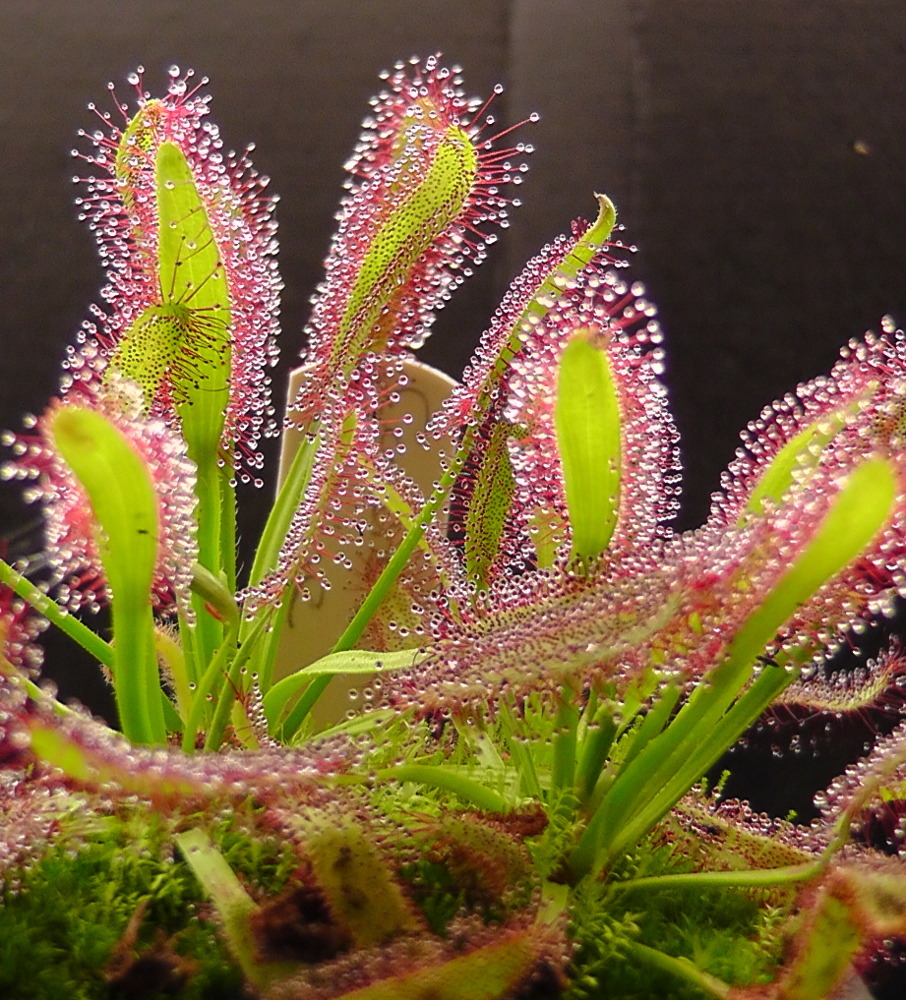
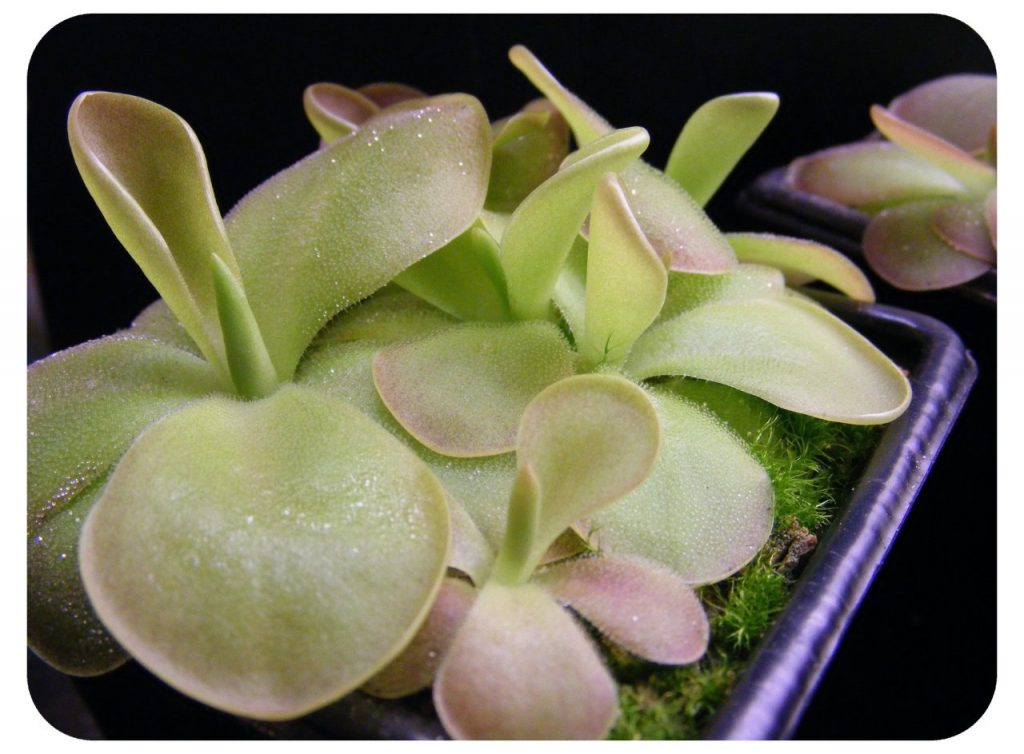
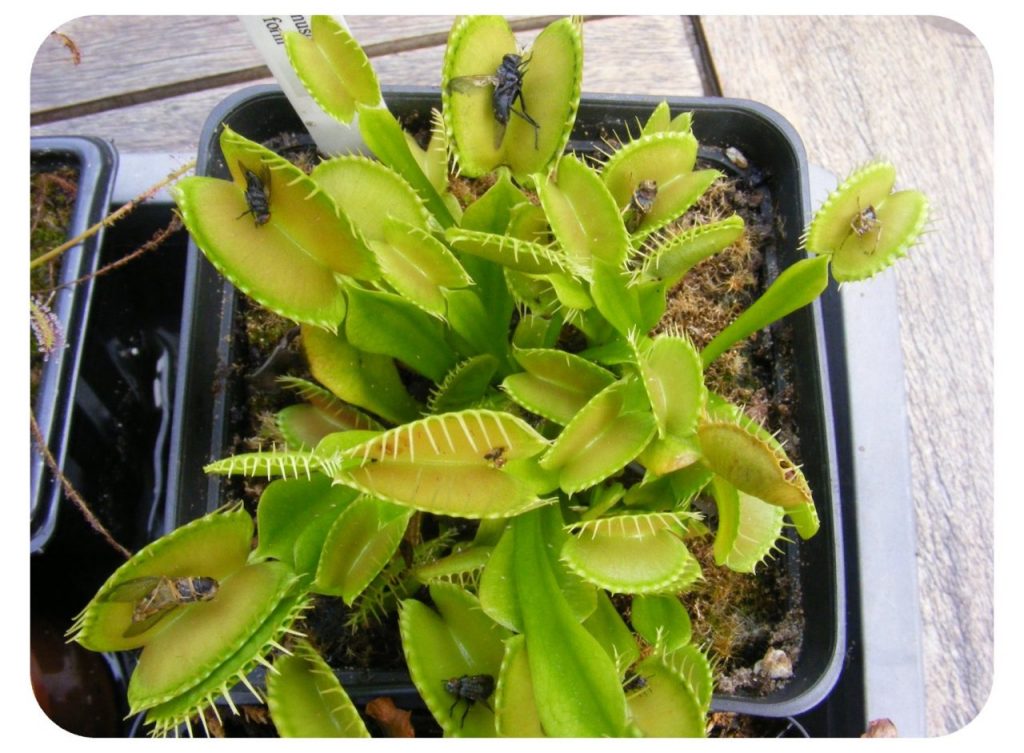
But are these carnivorous plants easy to grow indoors? Yes! A number of plants will thrive on a bright windowsill or conservatory and require no special attention once you meet some basic requirements.
The choice of species is important though, so let’s take a look at 5 of the easiest carnivorous plants for beginners…
Cape Sundew (Drosera capensis)
This attractive plant, originating from South Africa, is surely one of the easiest carnivorous plants to grow indoors. Indeed, many growers look down their noses at it and dismiss it as a ‘weed’ because it produces copious seeds and soon finds it way into other pots of their collection! But this seems a little unfair and overlooks the charm of the plant: a mass planting of Drosera capensis, with their dewy leaves glistening in the sun, is quite beautiful.
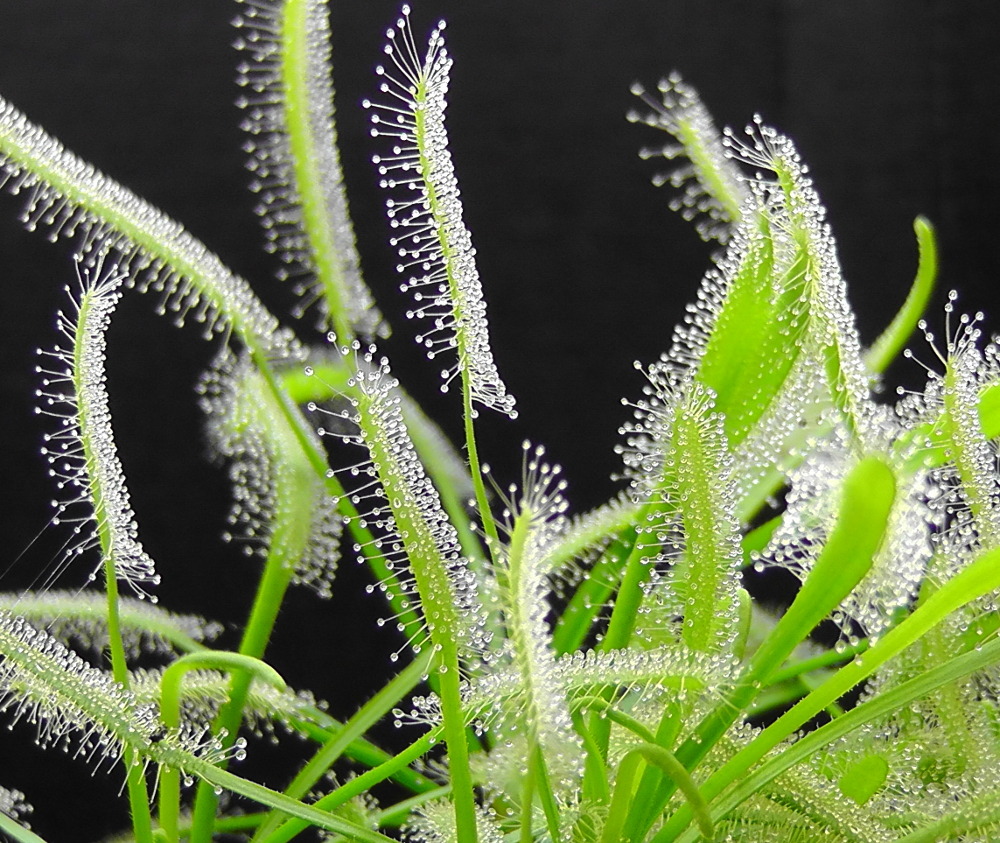
Compost
Grow this sundew in a 3:1 ratio mix of sphagnum moss peat and sharp sand (or horticultural grade perlite) or use a professional ready-mixed compost for carnivorous plants.
Containers
A 10 cm pot is ideal for a small group of plants. Use wider dishes for larger planting arrangements.
Watering
Always use clean rainwater, distilled water or water that has passed through a reverse osmosis unit. Normal tap water, if used over a period of time, can lead to the death of many carnivorous plants. During winter keep the compost just moist but between Spring to Autumn stand the pot in 1-2 cm of water.
Feeding
Do NOT use fertilisers! If the plant is not catching many insects indoors, you can stand it outside in a sheltered position on a warm day and it will soon catch flies.
Light
Sundews enjoy a lot of light, so they need a bright windowsill or conservatory. If such a position is not available, you can use LED or fluorescent lights (do not use incandescent bulbs as they give off a lot of heat and will scorch the plants).
Temperature
Normal indoor temperatures are fine, but Drosera capensis will survive dropping to around 4 degrees C in the winter. At lower temperatures the plant will become semi-dormant.
Alice Sundew (Drosera aliciae)
The Alice Sundew also originates from South Africa but unlike the upright growth habit of the Cape Sundew this plants forms ground-hugging rosettes. These rosettes gradually spread and form colonies which look very attractive. This sundew produces flowers borne on stalks which rise far above the rosettes. Individual flowers are pale pink and normally only last a day or so, but each flower spike will carry many individual flowers which open in succession over a period of a few weeks. It is a little less invasive than Drosera capensis but can still be propagated easily from the seeds which are produced during the summer.
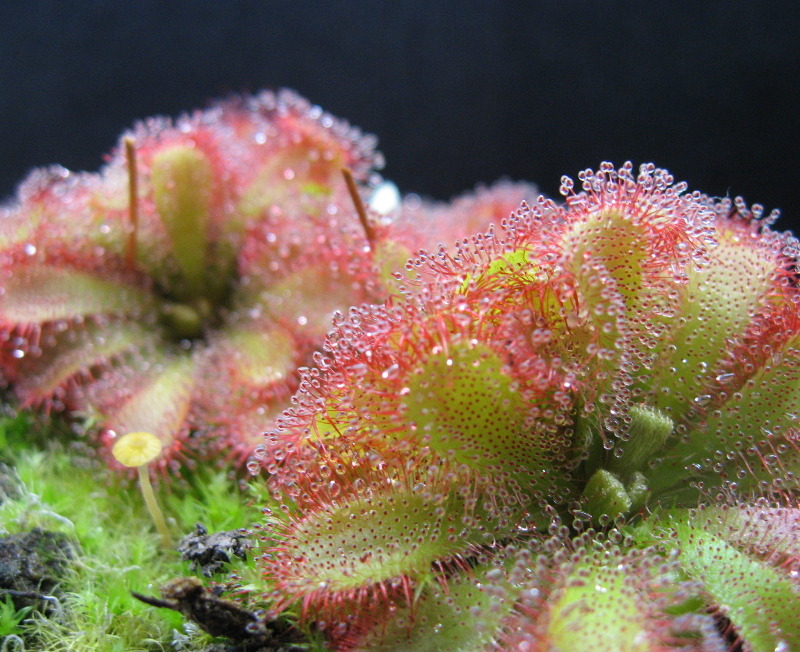
Compost
Use the same mix as for Drosera capensis above or use a professional ready-mixed compost for carnivorous plants.
Containers
As these plants look best when they form colonies it is desirable to use wider containers and add a group of plants. A depth of around 10 cm is suitable
Watering
Stand in 1-2 cm of rainwater from Spring to Autumn, and then keep compost damp during Winter but do not have the posts standing in water at this time.
Feeding
Do not apply any fertilisers but you may stand plants outdoors for a few hours in summer to catch small flies
Light
Grow these sundews on a bright windowsill, or under LED or fluorescent lights.
Temperature
Normal indoor temperatures, but the plants can tolerate a range of 4 – 30 degrees Celsius.
Venus Fly Trap (Dionaea muscipula)
This is surely the best known of the carnivorous plants! Few fail to be fascinated by the traps which suddenly snap shut around any hapless insect that wanders inside. Once inside, the prey’s movements further stimulate the trap to squeeze even tighter until the victim is suffocated. The trap then secretes digestive enzymes which break down the prey, releasing nutrients which the plant can then absorb.
You can often find these plants in garden centres and other retail outlets during the growing season and they always attract plenty of attention. It is so tempting to trigger the traps but you should avoid doing so repeatedly: each trap is designed to operate only a few times during its life, and opening and closing the trap drains the plant of strength. If the traps repeatedly close without any prey to digest, it will gradually weaken the plant and can lead to an untimely death.
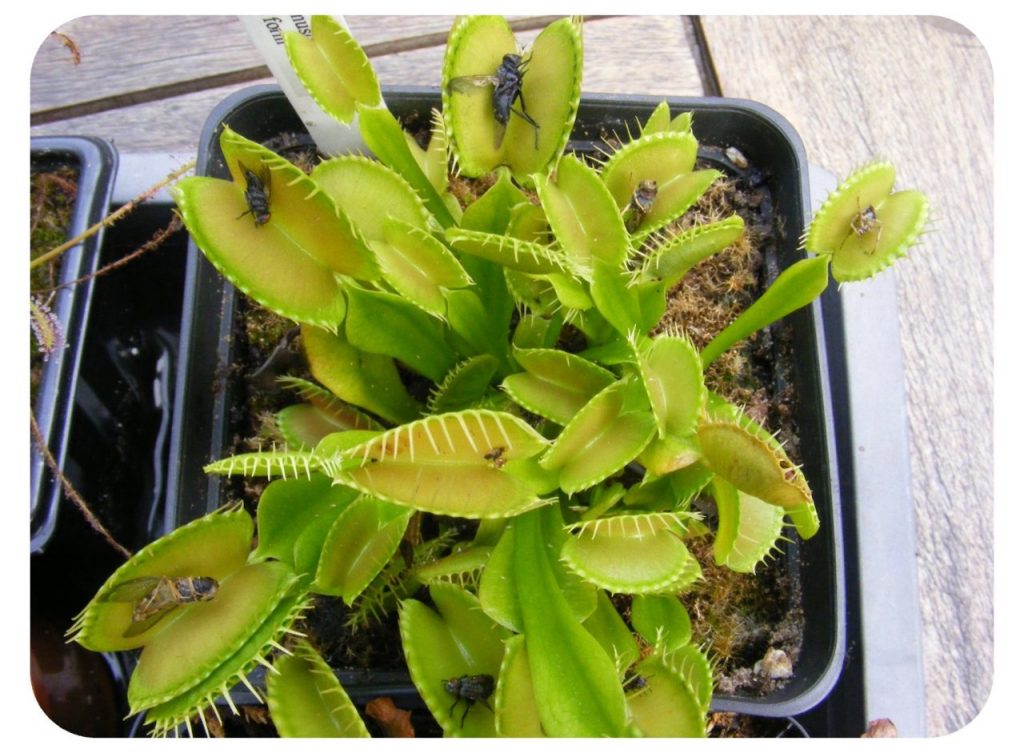
The Venus Fly Trap does have a reputation for being difficult to grow or dying quickly on its frustrated owners. This is partly due to people buying plants which have been already weakened by displays in garden centres, or the failure to meet some of the simple needs of the plant. Venus Fly Traps are often sold in very small pots but the plants should really be in a 10cm pot at least to prevent the compost becoming compacted or low in oxygen levels. Furthermore, tap water and fertilisers must never be used, and the compost should be acidic and low in nutrients.
Compost
Use a 3:1 ratio mix of sphagnum moss peat and sharp sand. You can add horticultural grade perlite in the mix as this helps to keep an open structure. If not mixing your own blend, use a professional ready-mixed compost for carnivorous plants.
Containers
A 10 cm pot is suitable for an individual plant, or grow several plants in a 15 cm dwarf pot.
Watering
Stand the pot in a wide saucer with approximately 2 cm of rainwater when the plant is actively growing (April – September). In late Autumn it is a good idea to move the plant to cooler conditions so it becomes semi-dormant over Winter. At this time the pots should not be standing in water but the compost should be kept damp at all times.
Feeding
Plants can be stood outdoors on a calm warm day during summer so that they can catch prey – but take care that birds do not peck around in the pots!
Light
Venus Fly Traps love a lot of light so grow on a sunny windowsill, a conservatory or under LED or fluorescent lighting.
Temperature
Although the plant can be grown under normal indoor temperatures all year round, in their natural habitat Dionaea muscipula experiences cool conditions and becomes dormant where it does not produce leaves and traps. You can move your plants to an unheated conservatory or cool greenhouse where the plants will be happy as long as long as temperatures do not dip below freezing for too long. Growth restarts again when the temperatures increase in Spring.
Mexican Butterwort (Pinguicula ‘Wesser’ et al.)
Butterworts are Nature’s flypapers! The leaves have a dewy coating which attracts and then traps small insects; digestive enzymes are then secreted which break down the prey and release nutrients which can be absorbed by the plant.
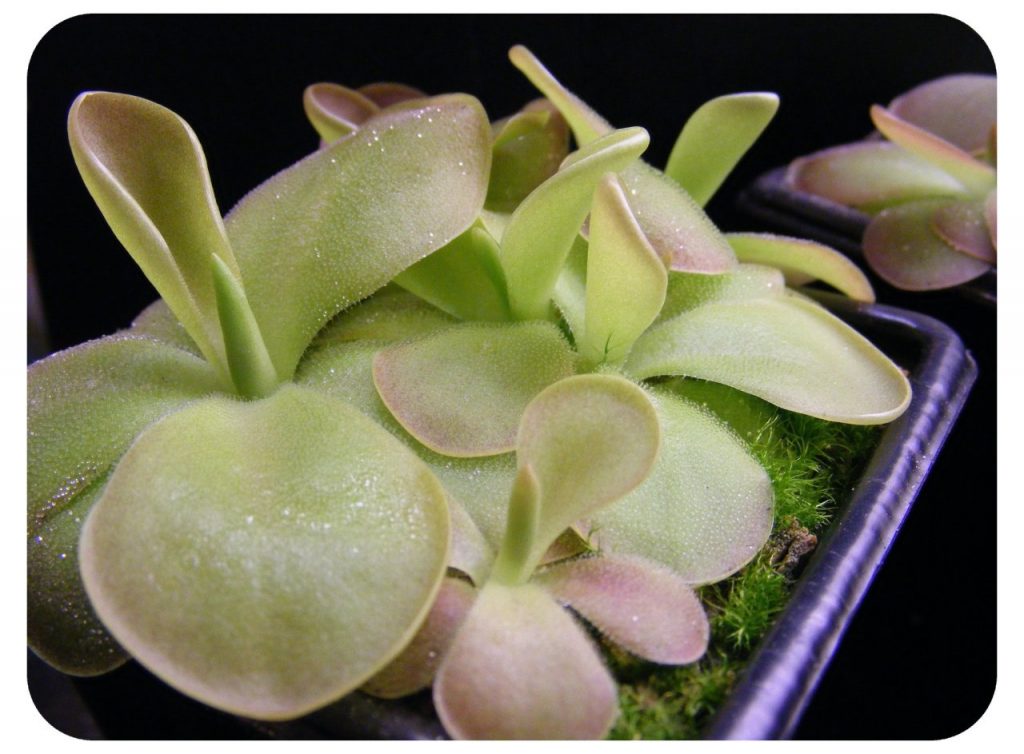
There are many Pinguicula species and hybrids but the easiest are those which originate from Mexico. A number of hybrids are available from garden centres as well as specialist carnivorous growers, but some of the most commonly available are hybrids known as ‘Wesser’, ‘Aphrodite’ and ‘Tina’.
In addition to their fascinating carnivorous diet, Butterworts produce some of the most attractive flowers of all carnivorous plants. The flowers normally range in colour from deep purple through pale pink to white, depending on the species or hybrid. Under strong lighting, and cooler conditions, the rosettes of butterworts can take on beautiful pinkish or bronzy colouring.
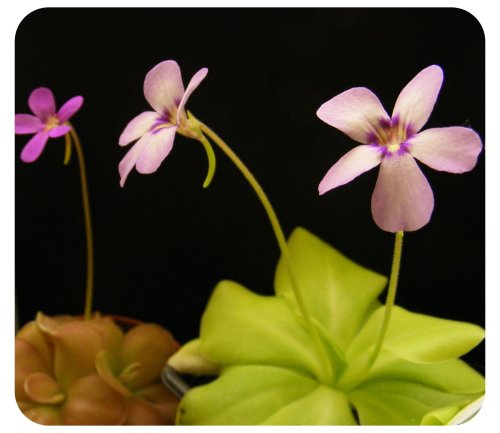
Compost
Unlike many other carnivorous plants, butterworts appreciate a more open, grittier compost mix. The following mix works well: 3 parts coarse grit, 1 part sharp sand, 1 part perlite, 1 part moss peat.
Containers
Pinguicula have very small, fragile root systems so a deep pot is not necessary but avoid anything less than 8 cm in depth. Grow individual plants in 8 or 9 cm pots, or use 12 – 15 cm pots for a group planting.
Watering
During the summer stand pots in a saucer with 1 cm of rainwater, but in Winter reduce the watering and keep the compost much drier. At this time, treat the plants more like succulents. They will produce smaller, tighter rosettes with non-carnivorous leaves. Once Spring temperatures rise, gradually increase the watering.
Feeding
No supplemental feeding is required.
Light
Choose a bright windowsill, but avoid scorching of the leaves through the glass. Pinguicula also respond very well to cultivation under fluorescent or LED lights.
Temperature
Mexican butterworts thrive in standard indoor temperatures but in Winter will also be happy in an unheated room with temperatures dipping down to around 5 Celsius.
Bladderwort (Utricularia sandersonii)
Unlike the previous plants, the bladderworts are generally grown for the appreciation of their flowers, rather than their trapping structures. This is because Utricularia catch their prey below the surface in tiny bladder-like structures which are normally out of sight. The genus Utricularia contains more species than any other genus of carnivorous plants, and these may grow in water, on the land, or as epiphytes (on trees).
Utricularia sandersonii is an easy and rewarding species to grow indoors, and the small white-ish flowers are produced freely throughout most of the year. The tiny light green leaves cover the surface of the compost and spread quite rapidly to fill the planting container. Consequently, it is easy to propagate the plant by dividing an established pot into several smaller pieces and re-planting in new containers.
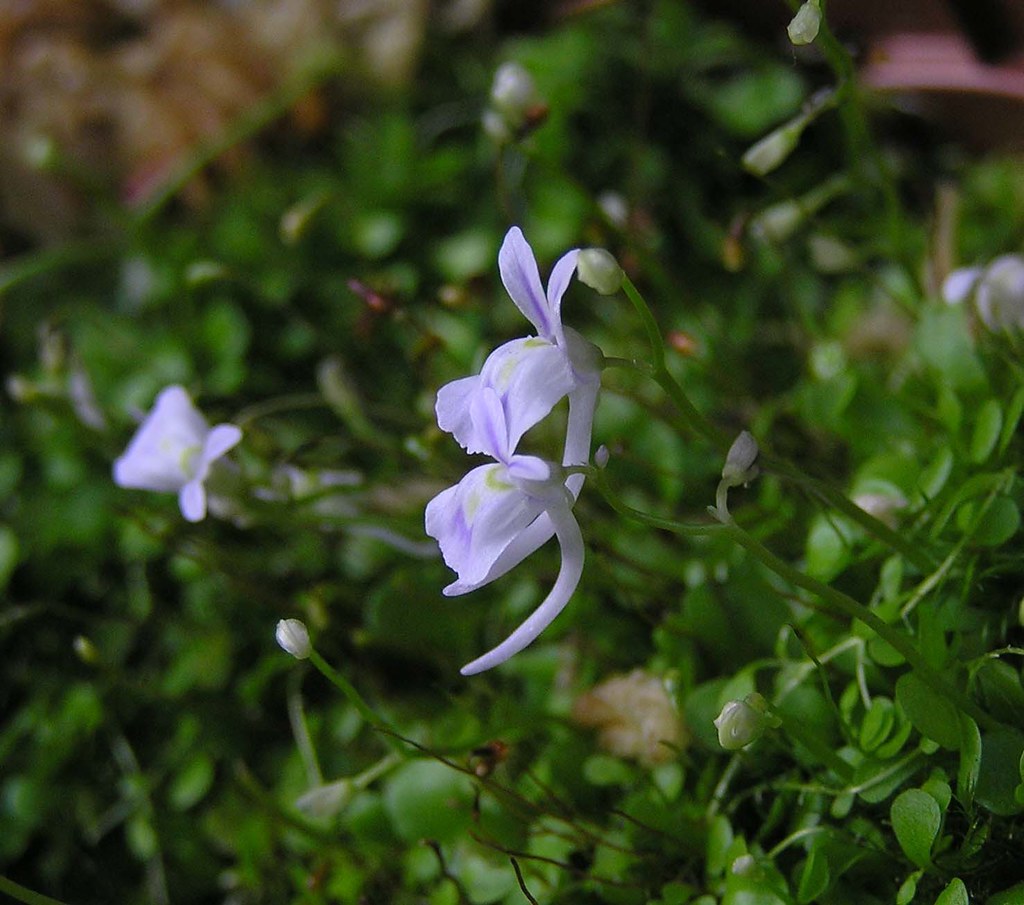
Compost
Use a 2:1 ratio mix of moss peat and sharp sand or use a professional ready-mixed compost for carnivorous plants.
Containers
Utricularia sandersonii will thrive in 8 cm or 10 cm pots.
Watering
Bladderworts enjoy wet soils so their pots should be permanently standing in a saucer with around 2-3 cm of rainwater.
Feeding
It is not necessary to apply fertilisers as the plants will trap tiny creatures that live in the waterlogged compost.
Light
Bladderworts are happy in medium light levels so choose a position that does not experience long periods of direct sun.
Temperature
Keep at warm indoor temperatures all ear round. Growth will slow down in cooler conditions (below 14 Celsius).
Are you growing carnivorous plants indoors?
There are many excellent books about the cultivation and care of carnivorous plants. These range from books that help novice growers to more technical treatises for experienced growers. A good ‘all round’ guide to the subject is The Savage Garden by Peter D’Amato.
Resources for carnivorous plant growers
Carnivorous plant sales
- Hampshire Carnivorous Plants
- Hewitt-Cooper Carnivorous Plants
- Little Shop of Horrors
- Triffid Nurseries
- Shropshire Sarracenia
Books
- The Savage Garden by Peter D’Amato
- Insect Eaters: How to Grow and Feed Extraordinary Plants by Adrian Slack